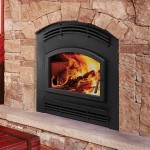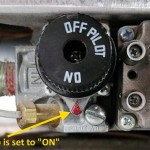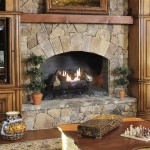Remote Controlled Fireplace Gas Valve Control Kit: Enhancing Comfort and Convenience
The integration of technology into home appliances has revolutionized the way individuals experience comfort and convenience. Among these advancements, the remote-controlled fireplace gas valve control kit stands out as a significant upgrade for those seeking enhanced control and ease of use with their existing gas fireplaces. This article will explore the function, components, installation process, advantages, and important considerations related to remote-controlled fireplace gas valve control kits.
A remote-controlled fireplace gas valve control kit provides the capability to operate a gas fireplace from a distance, eliminating the need to manually adjust the gas valve or pilot light. The kit essentially replaces or augments the existing manual gas valve with an electronic system responsive to remote commands. This functionality not only offers convenience but can also improve safety and energy efficiency.
Understanding the Components of a Remote Control Kit
A typical remote-controlled fireplace gas valve control kit comprises several key components that work in conjunction to enable remote operation. Understanding the function of each component is essential for proper installation and troubleshooting.
The core of the system is the gas valve itself. This electronic valve replaces the existing manual valve and is designed to control the flow of gas to the burner. The valve incorporates a solenoid that opens and closes the gas flow based on signals received from the receiver unit.
The receiver unit acts as the central processing unit of the kit. It receives signals from the remote control and translates these signals into commands for the gas valve. The receiver unit is typically mounted near the fireplace, often behind the fireplace surround, and is connected to the gas valve and a power source.
The remote control is the user interface for operating the fireplace. It allows users to turn the fireplace on and off, adjust the flame height (if the system supports modulation), and set timers. More advanced remote controls may include features such as thermostat control and child safety locks.
A pilot assembly is usually included or required, and this part provides the initial ignition source for the fireplace. The pilot assembly comprises a small burner that is always lit (in standing pilot systems) or ignited electronically (in intermittent pilot systems). The pilot flame ignites the main burner when the gas valve is opened.
Wiring harnesses and connectors provide the necessary electrical connections between all the components. These harnesses are designed for easy installation and typically include color-coded wires and plug-and-play connectors.
Lastly, a thermopile or thermocouple generator may be included to provide power to the gas valve in standing pilots systems. The thermopile converts heat from the pilot flame into a small electrical current that powers the valve solenoid.
Installation Process: A Step-by-Step Guide
Installing a remote-controlled fireplace gas valve control kit requires careful attention to detail and adherence to safety precautions. Improper installation can lead to gas leaks or electrical hazards. It is highly recommended to consult a qualified technician for installation, especially if you lack experience with gas appliances.
The first step is to shut off the gas supply to the fireplace at the main gas valve. This is a critical safety measure to prevent gas leaks during the installation process. Ensure that the gas supply is completely shut off before proceeding.
Next, remove the existing manual gas valve. This usually involves disconnecting the gas lines connected to the valve. Use appropriate wrenches to loosen the fittings and carefully remove the valve. Take note of the orientation of the gas lines for reassembly.
Install the new electronic gas valve in place of the old one. Ensure that the valve is properly aligned and that the gas line fittings are tightened securely. Use pipe thread sealant to prevent gas leaks. Double-check all connections for tightness.
Mount the receiver unit near the fireplace, preferably in a location where it is protected from heat and moisture. Connect the wiring harness from the receiver unit to the gas valve, following the manufacturer's instructions. Ensure that all connections are secure and properly insulated.
Connect the thermopile or thermocouple generator to the gas valve, if applicable. The thermopile is typically inserted into the pilot flame and generates a small electrical current to power the valve solenoid. Ensure that the thermopile is properly positioned in the pilot flame.
Install the pilot assembly, ensuring that the pilot flame is directed towards the main burner. Connect the gas line to the pilot assembly and tighten the fitting securely.
Connect the power source to the receiver unit. This may involve connecting the receiver to a nearby electrical outlet or using batteries. Refer to the manufacturer's instructions for the correct power requirements.
Turn the gas supply back on at the main gas valve. Check all gas line connections for leaks using a soap and water solution. If any leaks are detected, tighten the fittings until the leaks are stopped.
Finally, program the remote control to communicate with the receiver unit. This usually involves pressing a button on the receiver and remote simultaneously to synchronize the devices. Test the remote control to ensure that it can turn the fireplace on and off and adjust the flame height.
Advantages of Remote-Controlled Fireplace Gas Valves
The advantages of installing a remote-controlled fireplace gas valve are multifold, providing enhancements in convenience, safety, and energy efficiency. These benefits contribute to an improved user experience and a more comfortable living environment.
The most obvious benefit is the enhanced convenience of operating the fireplace from a distance. Users can turn the fireplace on or off without having to get up and manually adjust the gas valve. This is particularly useful for individuals with mobility issues or for those who simply prefer the convenience of remote operation.
Many remote-controlled fireplace gas valve kits include thermostat control, allowing users to set a desired room temperature and have the fireplace automatically adjust its flame height to maintain that temperature. This feature can improve energy efficiency by preventing the fireplace from overheating the room.
Some remote controls feature a timer function, which allows users to set the fireplace to turn off automatically after a specified period. This can be useful for conserving energy and preventing the fireplace from running unattended for extended periods.
Remote-controlled fireplaces can be safer than manual fireplaces, especially for households with children or pets. The remote control can be kept out of reach of children, preventing them from accidentally turning on the fireplace. Some remote controls also feature a child safety lock that disables the fireplace controls.
Remote-controlled fireplaces can also be more energy-efficient than manual fireplaces. The ability to adjust the flame height and set timers allows users to optimize the fireplace's energy consumption based on their needs. This can result in lower gas bills and reduced environmental impact.
For individuals with limited mobility, a remote-controlled fireplace can greatly improve accessibility and independence. The ability to operate the fireplace from a distance eliminates the need to bend down or reach for the gas valve, making it easier for individuals with physical limitations to enjoy the warmth and ambiance of a fireplace.
Finally, the addition of a remote control to a fireplace enhances the overall aesthetic appeal and modernizes the appliance. It brings an element of technological sophistication to the living space.
Important Considerations
While remote-controlled fireplace gas valve control kits offer numerous advantages, there are several important considerations to keep in mind before purchasing and installing one. These considerations relate to compatibility, safety, and maintenance.
It is imperative to verify that the remote-control kit is compatible with the existing fireplace. Gas fireplaces can utilize different types of gas valves and ignition systems, and not all remote-control kits are compatible with all fireplaces. Consult the fireplace manufacturer's specifications or a qualified technician to ensure compatibility.
Safety certifications are a must-have. Ensure that the remote-control kit is certified by a reputable testing laboratory, such as UL or CSA. These certifications indicate that the kit has been tested and meets safety standards.
During installation, ensure that all gas line connections are leak-free. Use a soap and water solution to check for leaks after the gas supply has been turned back on. If any leaks are detected, tighten the fittings until the leaks are stopped.
Regular maintenance is crucial. Periodically inspect the gas valve, pilot assembly, and wiring connections for any signs of wear or damage. Clean the pilot assembly and burner to ensure proper operation. Replace batteries in the remote control and receiver unit as needed.
It's important to consider power source reliability. If the remote-control kit relies on batteries, ensure that the batteries are fresh and that spares are readily available. If the kit is connected to an electrical outlet, consider using a surge protector to protect the electronics from power surges.
Understanding local codes and regulations related to gas appliance installations is important. Some jurisdictions may require permits or inspections for gas appliance installations. Check with the local building department to ensure compliance with all applicable codes and regulations.
For users new to gas appliance maintenance, professional assistance is highly recommended. If you are not comfortable installing or maintaining a remote-controlled fireplace gas valve control kit, consult a qualified technician. A professional can ensure that the kit is installed safely and properly and provide ongoing maintenance services.

Skytech Remote Controlled Fireplace Gas Valve Control Kit Af Lmf R

Af Lmf R Safety Valve Kit Remote Control For Vented Gas Log Fireplaces Onfireguy

Grand Canyon Modulating Millivolt Valve Kit With Remote

Hargrove Lck Rc Latch Tap Block Kit With On Off Remote Control Us Fireplace

Dexen Electronic Ignition Valve With 2 D Cell Battery Pack

Skytech 1001t Lcd Timer Fireplace Remote Control

Gas Valve Kit Guide Fireplaces Direct Learning Center

Skytech Af Lmf Rvs Valve Kit With Manual On Off Remote Control Ca

Fireplace Skytech Valve Kit With On Off Hi Low Remote Afvk Sp Mh L Diy Part Center

Dexen 6003 Series Millivolt Valve Kit With Quick Connect
Related Posts








